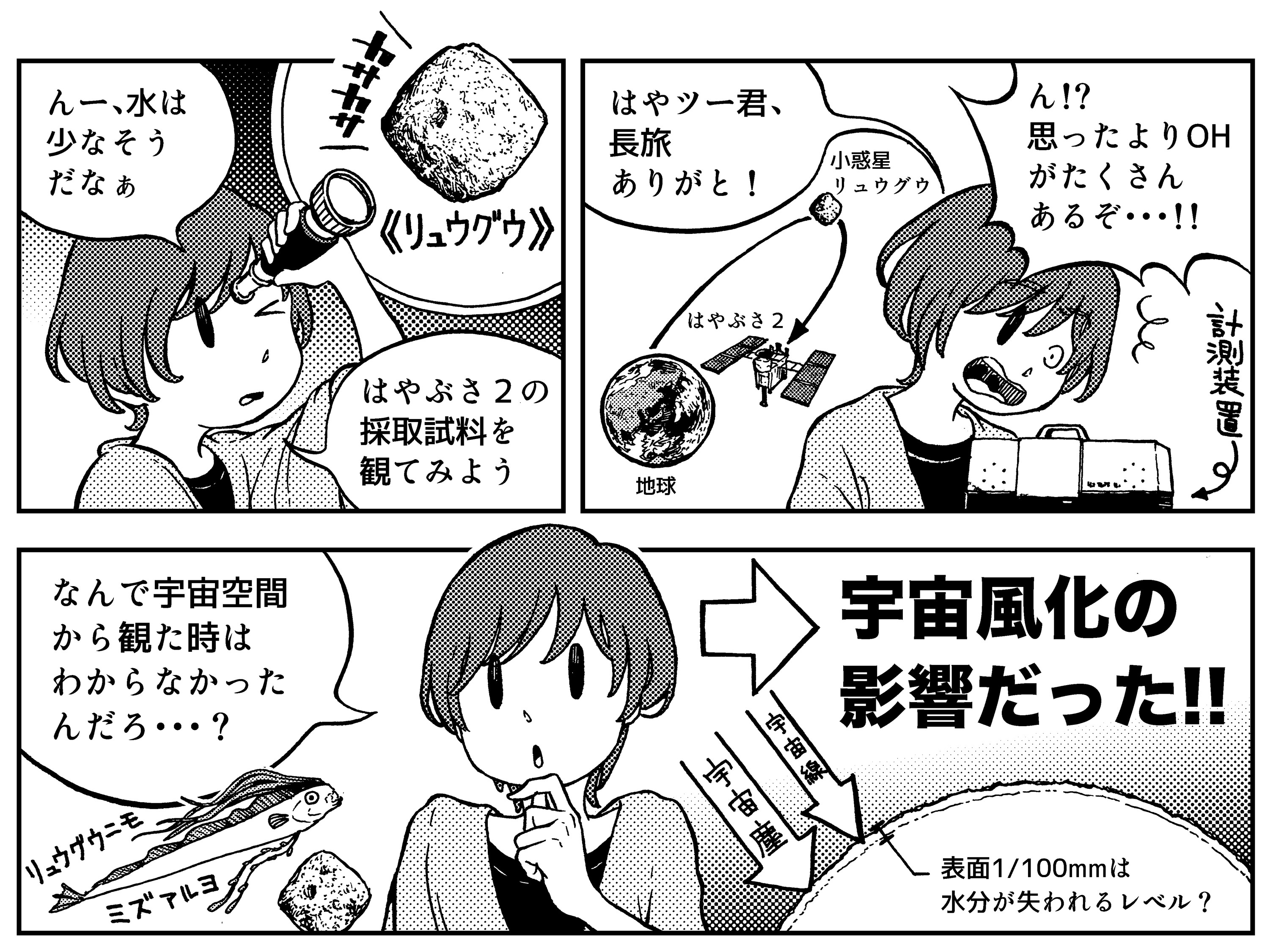DATE2023.09.27 #Press Releases
Why does asteroid Ryuguu look different in space and in the laboratory?
Disclaimer: machine translated by DeepL which may contain errors.
~"Space weathering" hides water signatures ~.
National Institute of Advanced Industrial Science and Technology (AIST)
Tohoku University
Japan Atomic Energy Agency
The University of Tokyo
Kyushu University
Summary of Presentations
Moe Matsuoka, Research Staff, Remote Sensing Research Group, Geological Information Research Division, Geological Survey of Japan, National Institute of Advanced Industrial Science and Technology (AIST); Toru Kamiyama, Geospatial Services Research Team, Digital Architecture Research Center, AIST Head of Department: Professor Tomoki Nakamura, Department of Earth Sciences, Graduate School of Science, Tohoku University; Kana Amano, Japan Society for the Promotion of Science Associate Professor, Takahito Osawa, Research Director, Hierarchical Structure Research Group, Research Center for Materials Science, Japan Atomic Energy Agency, Department of Earth and Planetary Science, Graduate School of Science, The University of Tokyo, Professor Shogo Tachibana, Department of Earth and Planetary Science, Graduate School of Science, Kyushu University, Professor Hiroshi Naraoka, Associate Professor Ryuji Okazaki, and others and other researchers, we conducted a direct comparison between the data obtained by the asteroid probe "Hayabusa2" from the sky over the surface of the asteroid Ryuguu and the data obtained by measuring samples collected and brought back from Ryuguu (sample return) without exposing them to the Earth's atmosphere.
As a result, we found that while the observed data from the surface of Ryuguu and the sample return data agree well, there is a clear difference in the absorption of hydroxy groups (-OH), which is the key to determine the presence or absence of water. In order to clarify the cause of this difference, experiments and data analysis of primitive meteorites similar to Ryuguu, which are rich in hydrous silicates, revealed that the surface of Ryuguu (about 1/100 mm) is altered by exposure to cosmic rays and cosmic dust (space weathering), resulting in partial loss of water.
This research result, which was only possible through a combination of remote observation from the spacecraft and analysis of collected samples, is one of the landmark results that demonstrate the importance of sample return in planetary exploration. The details of the study were published in Communications Earth & Environment on September 27, 2023 (JST).

For more information, please visit the website of the National Institute of Advanced Industrial Science and Technology (AIST).
Journal
-
Journal name Communications Earth & EnvironmentTitle of paper Space weathering acts strongly on the uppermost surface of RyuguDOI


